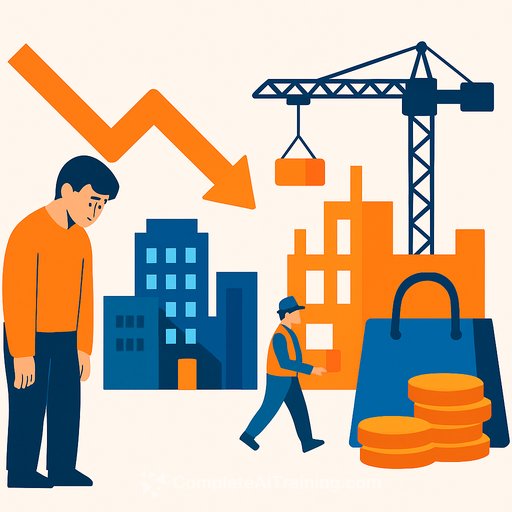Korean Economy Faces Stagnation as Construction Sector Declines
The Korean economy is projected to grow just 0.9 percent in 2025, largely due to a persistent slump in the construction industry. Despite gains in domestic spending and eased U.S. tariffs, the drag from construction investment is enough to offset these positive factors.
Construction Sector Decline Weighs Heavily on Growth
Investment in construction is expected to shrink by 8.2 percent this year, following a 3.3 percent drop in 2024. This ongoing downturn is the main factor behind the government’s downgraded growth forecast and signals the start of an extended period of low expansion for Korea’s economy.
Several challenges are contributing to the slump:
- Slower recovery in project financing
- Rising construction costs
- Tightened lending regulations targeting household debt
These pressures have pushed the value of building construction down to its lowest level since 1999, when the Asian financial crisis impacted the sector severely.
Domestic Consumption and Exports Show Mixed Signals
On the positive side, private consumption is bouncing back, forecasted to grow 1.3 percent this year, a slight improvement from 2024. This rebound has been supported by government-issued vouchers aimed at encouraging household spending.
However, export growth is slowing sharply, expected to rise by only 0.2 percent in 2025, down from 8.1 percent last year, primarily due to U.S. tariffs. Still, the recent tariff agreement has eased uncertainty around trade tensions.
Policy and Market Outlook
The government’s pro-labor stance and stricter workplace safety regulations are expected to further dampen business sentiment within the construction industry this year. Although policy measures to support the sector are anticipated, their impact may be limited by timing and a priority on stabilizing the real estate market.
Analysts suggest that the Bank of Korea (BOK) is unlikely to cut interest rates soon. The central bank remains cautious, warning that premature easing could reignite rising home prices and increase household debt, potentially weakening consumption further.
As BOK Governor Rhee Chang-yong noted, the construction sector has been the main drag on growth for two years. If construction investment had remained flat instead of declining, Korea’s growth rate could have been closer to 1.7 percent this year.
Looking Ahead: Central Bank Decisions and Market Impact
All eyes are on the upcoming BOK policy decision. Analysts expect rates to remain steady for now, with a possible cut in October if housing prices show clear signs of moderation. Some forecasts even suggest a slight upward revision of the GDP growth forecast to around 1 percent.
For professionals in real estate and construction, these trends highlight the importance of monitoring regulatory changes, market financing conditions, and government policy shifts closely.
Staying informed and adapting strategies will be key for navigating the ongoing challenges in Korea’s construction sector.
Learn more about how economic factors impact the real estate and construction industries through targeted AI and market analysis courses at Complete AI Training.
Your membership also unlocks:






